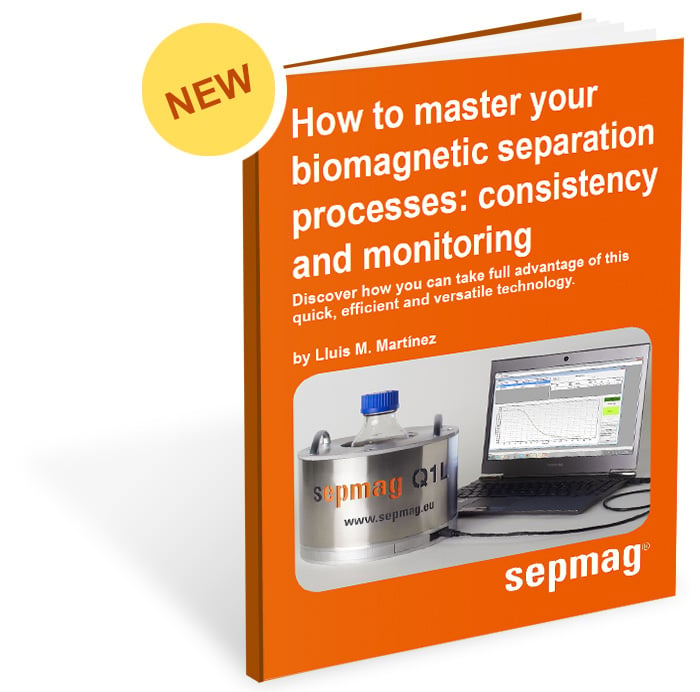The key parameter for the biomagnetic separation processes is the magnetic force applied over the magnetic beads' suspension. The competition of this force with the drag force generated by the buffer viscosity will translate into the speed at which the magnetic beads separate.
Classical magnetic separation systems generate magnetic field profiles where the value changes rapidly with distance from the magnet. This means that the force that the beads experience in classical separation systems is high near the magnet surface but decreases rapidly with distance.
As a result, the magnetic force experienced by the beads placed close to the magnet is very different compared to those farther away. This is a major problem when scaling up, because the distance of the farthest bead from the magnet is greater than at smaller volumes. Beads closest to the retention area experience the strongest magnetic force, over the (considerable) length of time needed to capture the farthest beads. This risks the irreversible aggregation of the closest beads, and the loss of the farthest beads. The batch's consistency is therefore at risk under these conditions.
Increasing the size of the magnet is not always a good solution for this problem. A larger magnet generates a higher magnetic field at the same distance compared to a smaller magnet. However, this field is also more spatially uniform, and generates a lower magnetic force.
To guarantee consistency, the magnetic force must be constant over the entire suspension volume. This can’t be achieved with classical magnetic separators, nor with simple permanent magnet assemblies. To obtain constant magnetic force, you need biomagnetic separation systems with specific magnetic field spatial profiles, designed specifically for this purpose.
Using a well-defined magnetic force allows you to determine the right magnetic force value for different applications. For example, the optimal magnetic force value is not the same for an IVD coating process using 1-micron beads at 1%, as for eluting proteins for magnetic Sepharose beads at high concentration, or for isolating cells with magnetic nanoparticles at very low concentrations.
Simple magnet assemblies generate inhomogeneous forces: strong forces near the magnets (detail), but almost no force over the farthest beads (main picture shows inhomogeneous separation).
The old saying ‘magnetic beads don’t work at large volumes’ is, simply, wrong. If you want to learn what leading IVD-manufacturers already know, this is the e-book for you!
Related news



